
6 perennials for a North-facing garden
Our selection for shaded gardens
Contents
Perennial plants are perfect for adding colour and brightness to a garden or border exposed to the North. However, as shade is present all year round, it is important to choose plants that can thrive in shaded and damp conditions and withstand frost in winter. Opt for light or variegated foliage, and white or warm-coloured flowers to brighten up the spaces. Select understorey plants that can easily cover the ground, leaving no room for weeds and thus making garden maintenance easier. Here is our selection of shade-loving perennials and dry shade perennials to grow in your North-facing garden.
Pachysandra terminalis
The Pachysandra terminalis is a perennial ideal for covering soil in shade. Native to China and Japan, it is also known as Japanese Spurge. It cannot tolerate direct sunlight. For it, a northern exposure, in shade or partial shade, where the soil remains cool, is preferred. Very hardy, it withstands negative temperatures around -15°C. Thanks to its creeping stolons, it spreads across the ground to form a dense and homogeneous carpet about 30 cm high. Note that a single plant can spread, without haste, to 50 cm in width. Its leaves are dentate inserted in clusters on small branches, giving it all its charm. Moreover, they are evergreen and remain present all year round. Another plus for the Pachysandra, which is also decorative in winter! In June, modest white flowers, slightly fragrant, bring a bit of brightness to this groundcover. The variety Pachysandra terminalis ‘Variegata’ features leaves marginate with white. Plant Pachysandra terminalis in soil rich in humus, neutral to acidic. Not fearing root competition, it is useful for dressing the bases of trees or bushes, such as Japanese Maples, Magnolia, Aucuba, and Rhododendrons and Azaleas.
⇒ Discover our range of Pachysandras on our site.
⇒ Our advice sheet on Pachysandra terminalis: planting, cultivation, care.

Pachysandra terminalis
Read also
The best hardy geraniums for shadeCimicifuga racemosa
Here is a majestic shade plant: the Cimicifuga racemosa. It is also known as Silver Candle or Bugbane, as during the summer, from July to August, white spike inflorescences appear at the top of tall stems that can reach 1.80 m in height! However, note that the bitter and rather peculiar scent of its flowers and crushed leaves is not always appreciated by everyone. But this highly melliferous plant will delight insects! With excellent hardiness, this Bugbane growing in forests loves shade and partial shade, as well as cool, humus-bearing, and even clayey soils. With its large stature, the Silver Candle is best placed at the back of a perennial border, sheltered from the wind to avoid damaging its long flower spikes. Its clump can spread up to 60 cm in diameter. At the end of summer, its very graphic aspect can be enhanced by pairing it with large Hostas with rounded leaves, ferns, Japanese Anemones, and Bleeding Hearts.
⇒ Our selection of Cimicifugas on our site.
⇒ Discover how to plant, grow, and care for Cimicifugas.
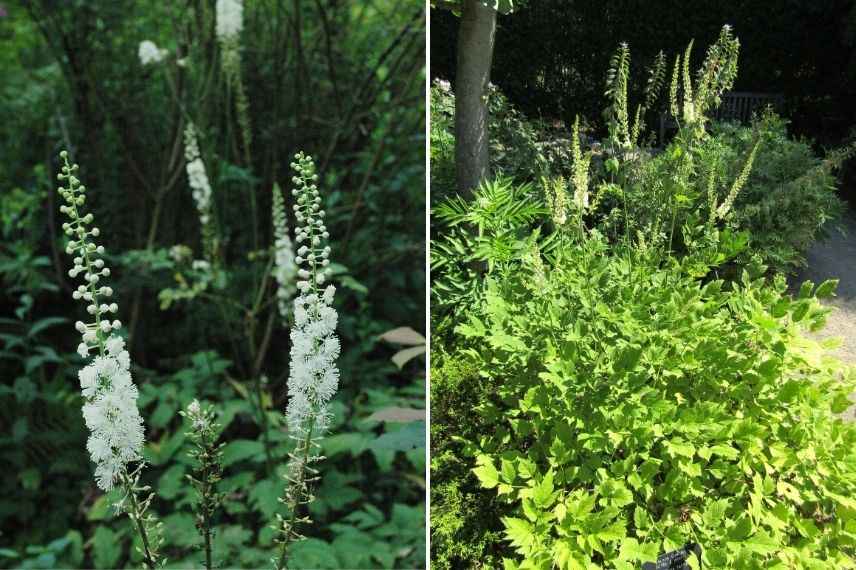
Cimicifuga racemosa (photos cjohansen / Leonoara Enking – Flickr)
Discover other Perennials
View all →Available in 1 sizes
Available in 0 sizes
Available in 1 sizes
Available in 1 sizes
Available in 2 sizes
Available in 1 sizes
Available in 1 sizes
Available in 1 sizes
Available in 1 sizes
Available in 1 sizes
Epimedium pubigerum 'Orangekönigin'
The Epimedium pubigerum ‘Orangekönigin’ is a true feast for the eyes as spring arrives. This variety produces numerous flowers in shades of yellow, orange, and copper from April to May. They are perfect for warming up the atmosphere of a shady garden. This perennial is also known as the Flower of the Elves, as its small star-shaped flowers perched on sturdy yet delicate stems exude a fairy-like elegance. As for its heart-shaped foliage, semi-evergreen depending on the climate, it changes colour throughout the seasons, shifting from tender green and bronze in spring to coral orange in autumn. The Epimedium pubigerum ‘Orangekönigin’ thrives in woodlands, in neutral, rich soils, but also in stony soils, making it suitable for shady rockeries. Withstanding very low temperatures (down to -15°C), this groundcover effectively dresses difficult-to-cultivate areas, such as beneath trees. Although it is often used as a spreading plant, the Flower of the Elves can also be placed in a shady border alongside Comfrey Symphytum azureum, the Sweet Violet, the Wood Anemone, and Brunnera macrophylla with its tiny blue flowers, as well as the rare Caulophyllum thalictroides or Blue Cohosh.
⇒ Discover more species and varieties of Epimediums in our range.
⇒ Learn all about the planting, growing, and maintenance of Epimediums!
⇒ Find our ideas for how to associate Epimediums.
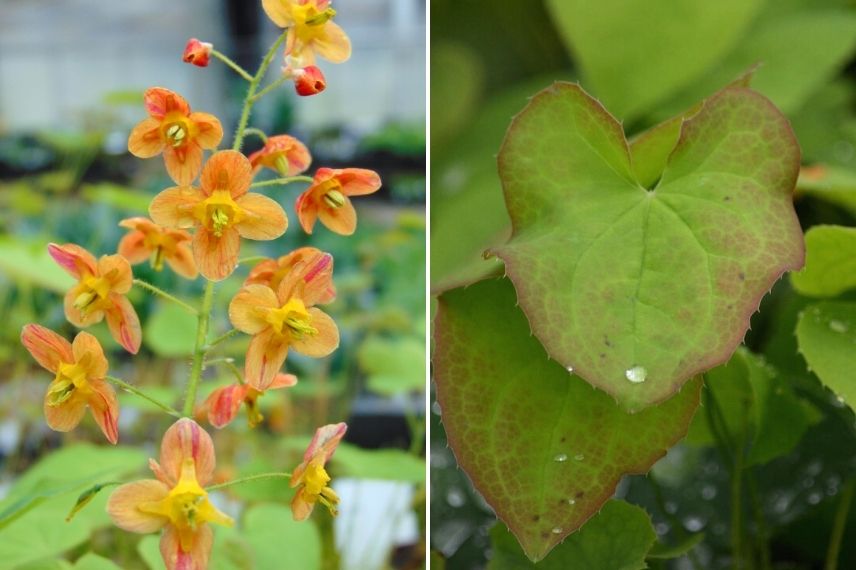
Epimedium pubigerum ‘Orangekönigin’
Read also
10 plants to create a shady rockeryLamiastrum galeobdolon
The Lamiastrum galeobdolon is a perfect groundcover to brighten up shady gardens! The distinctive feature of this highly decorative Lamium is its very bright bicoloured variegated foliage. Its dentate leaves, green and silver, resemble those of nettles, which is why it is also known as Yellow Nettle. Although they are not prickly, we advise against crushing them, as they emit an unpleasant smell. The summer flowering of this bright yellow Lamium also provides a lovely display in June and July. Over time, a carpet up to 30 cm thick spreads across the soil as its stolons extend. As it can sometimes be invasive, we recommend planting it in natural spaces, where it can spread freely, preventing weeds from growing. On slopes or at the base of trees in partial shade or shade, it can be paired with spring bulbs, such as Snowdrops, Cyclamen coum, and Spanish Hyacinths, or with other groundcovers for shade like Lesser Periwinkle or Cymbalaria muralis.
⇒ Discover our range of Lamiums!
⇒ Learn all about planting, pruning, and care of Lamiums.
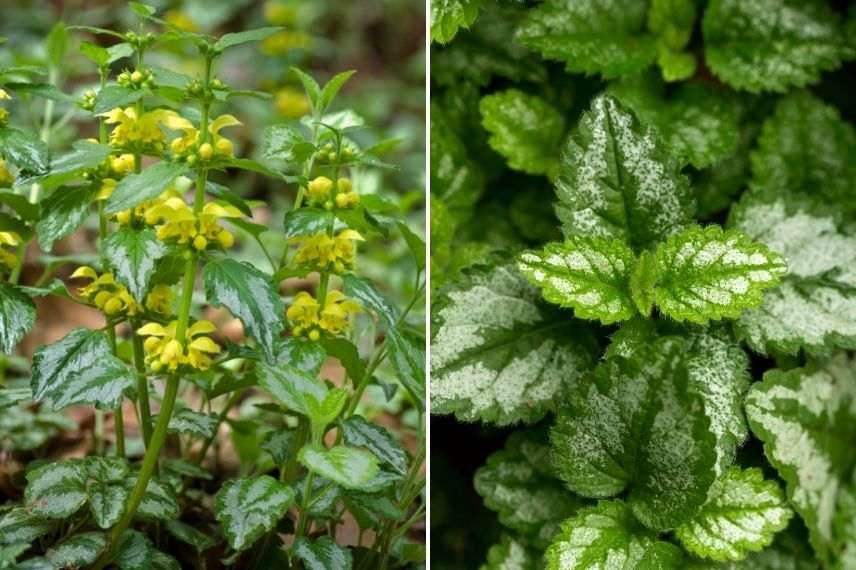
Lamiastrum galeobdolon
Galium odoratum
On mainly knows Galium odoratum as Sweet Woodruff or Fragrant Bedstraw. Native to Eastern Europe and Russia, this Woodruff is valued for its emerald green leaves arranged in a star shape on the stems, as well as for its small, delicately scented white flowers that bloom from April to June. Highly resistant to cold (down to -20°C), this woodland perennial is used for its calming medicinal properties or as an aromatic plant for desserts and liqueurs. Indeed, its dried leaves release a fresh fragrance, reminiscent of cut hay or tonka bean. Very resistant to diseases and rarely affected by insects, Galium odoratum only fears scorching sun and drought. Every autumn, adding compost enriches its soil. Pair Sweet Woodruff with woodland plants, such as Solomon’s Seal, Lily of the Valley, Heathers, Ferns like Dryopteris and the barren strawberry Waldsteinia ternata.
⇒ Discover other varieties of Woodruffs on our site.
⇒ Planting, growing, and caring for Woodruff, we tell you everything!
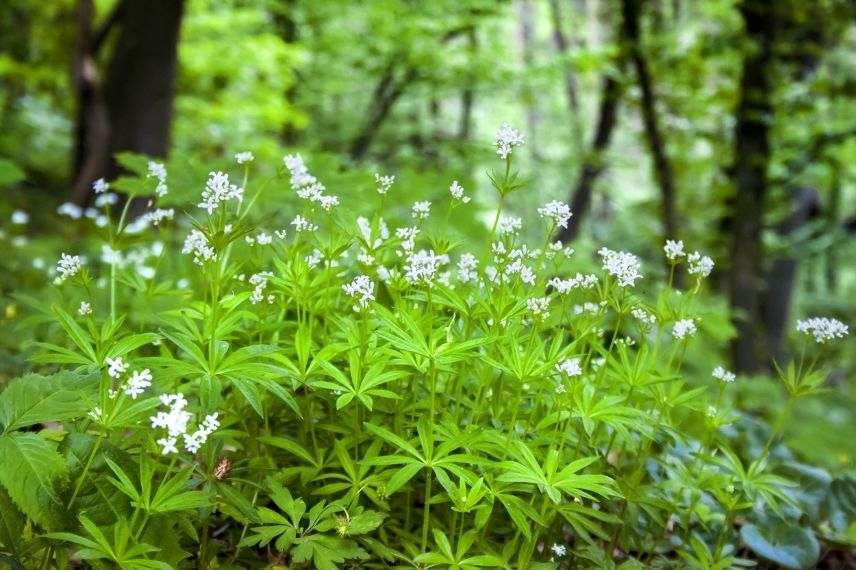
Galium odoratum
Geranium macrorrhizum
The Geranium macrorrhizum thrives in both sun and shade. It is also known as Bigroot Geranium or Large rhizome Geranium, as it rapidly develops using its thick, long creeping rootstocks. At maturity, this dense clump reaches 40 cm in height and 50 cm in width and can survive in challenging conditions: harsh winters, very dry summers, and shaded areas. In autumn and winter, the rounded and lobed leaves of this perennial take on lovely shades of red, orange, and bronze. Additionally, they are aromatic and rich in a powerful essential oil reminiscent of rhubarb. From April to June, small mauve-pink flowers appear in corymbs at the tips of the flower spikes, standing about 30-40 cm above the ground. With its creeping habit, this Geranium can be used to smother weeds, as well as to add colour to a shady rockery with its beautiful late-season hues. The Long Rhizome Geranium pairs well with Saxifrages, Tiarellas, Bergenias such as the variety ‘Eden’s Dark Margin’, and the Gentian with its beautiful blue summer flowers.
⇒ We offer other varieties of Geranium macrorrhizum on our site.
⇒ The best practices for planting, growing, and maintaining Hardy Geraniums can be found in our guide.
⇒ Discover all our tips for choosing Hardy Geraniums.
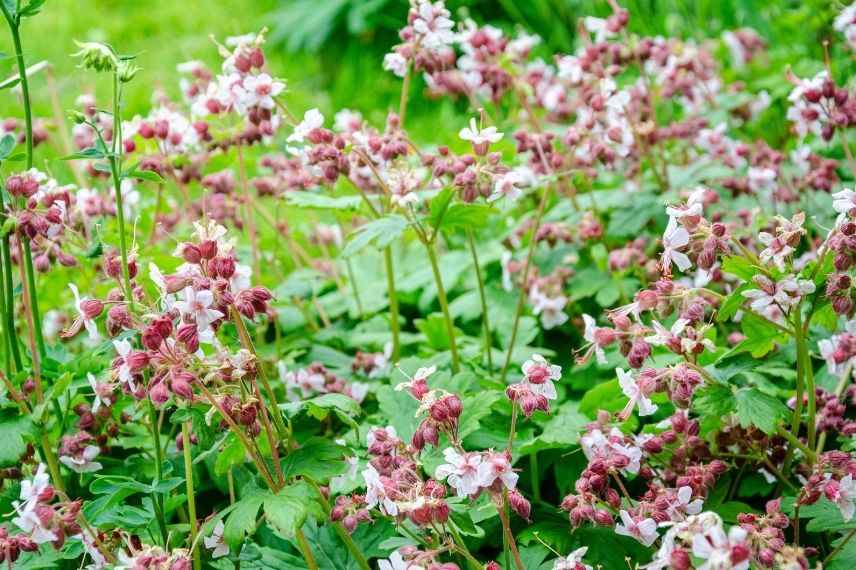
Geranium macrorrhizum
For further reading
- Discover our selection of 5 trees for gardens exposed to the north
- Subscribe!
- Contents
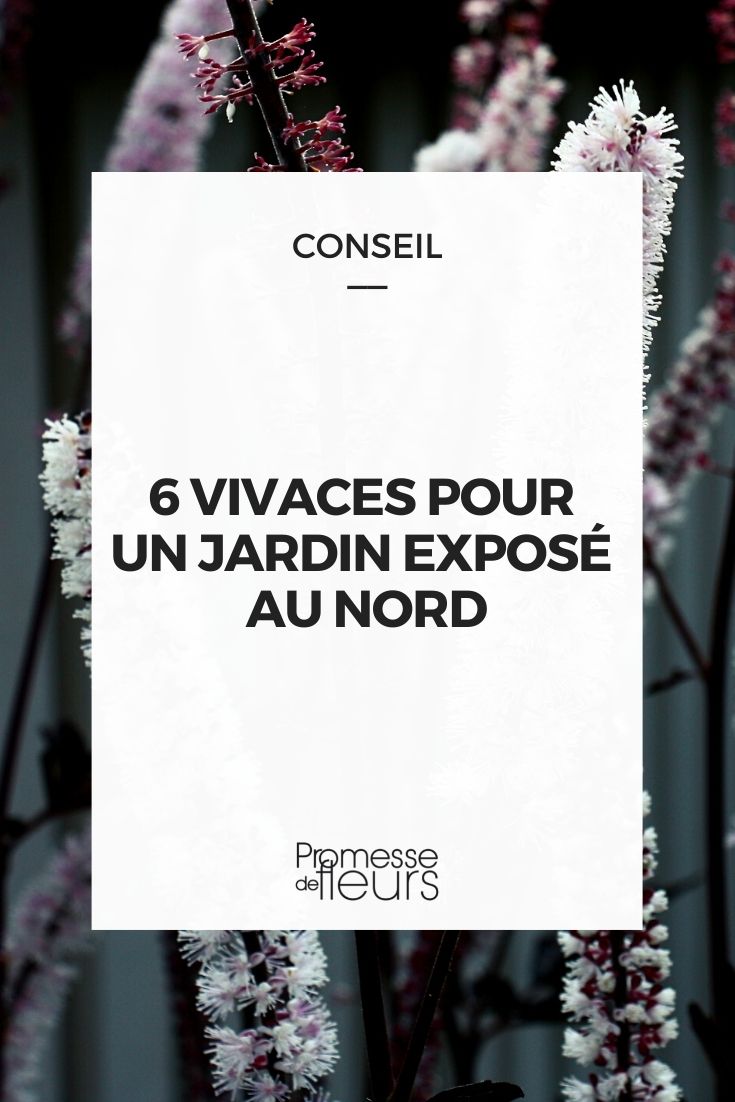































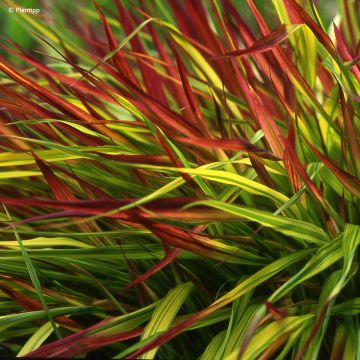


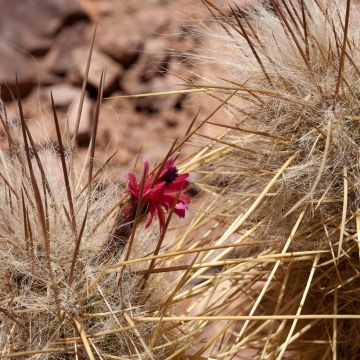

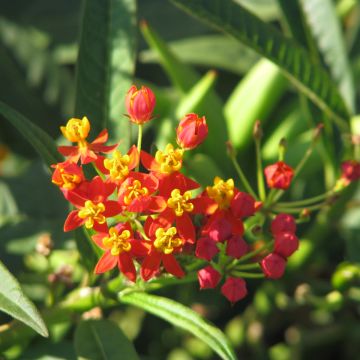

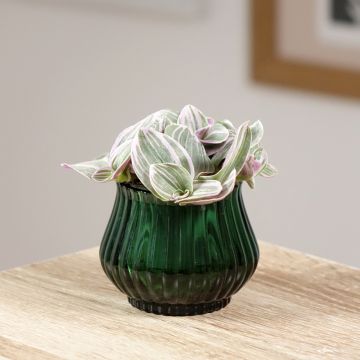
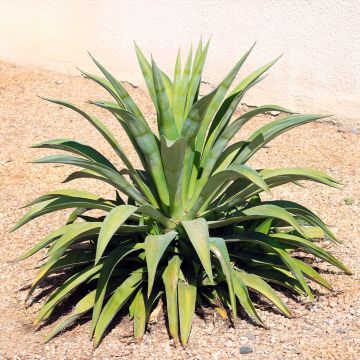

Comments